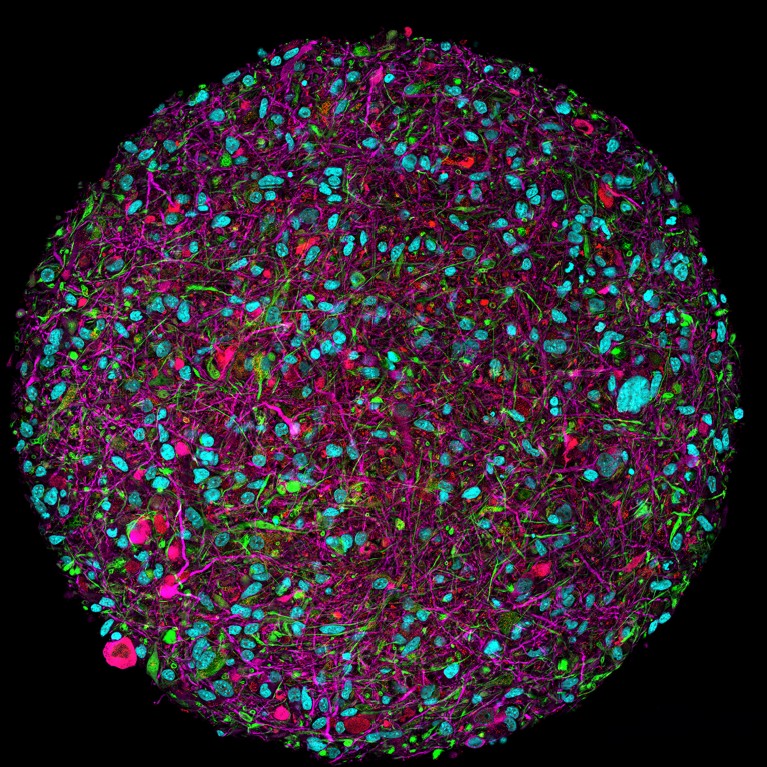Four game-changing immunology tools to watch
Article Meta
Article Date: 22 October 2025
Article URL: https://www.nature.com/articles/d41586-025-03335-7
Article Image: 
Summary
Researchers are getting an unprecedented look at the human immune system in 2025 thanks to four emerging approaches. The article outlines: THX humanised mice that more faithfully reproduce human immune responses; organ-on-chip and organoid systems that could replace animal models for many studies; advanced single-cell sequencing combos (scRNA-seq with CITE‑seq, ATAC‑seq and Perturb‑seq) that reveal cell states, protein markers and regulatory potential; and shifting funder and regulator priorities (NIH and FDA) that favour human-based systems over animal testing. Together, these tools are reshaping vaccine, cancer and drug-research pipelines.
Key Points
- THX mice: a new humanised-mouse model that mounts stronger, more human-like antibody responses and is easier and cheaper to produce than many existing models.
- Organ-on-chip and organoid systems recreate human tissues (gut, liver, lung, brain organoids) and improve relevance of preclinical studies, potentially reducing reliance on animal models.
- Single-cell RNA-sequencing (scRNA-seq) paired with CITE‑seq captures RNA and surface proteins from the same cell, refining cell-type definitions and guiding immunotherapy design.
- Single-cell ATAC‑seq reveals DNA accessibility and gene-regulatory potential, helping to predict future cellular behaviours and treatment relapse mechanisms.
- Perturb‑seq couples scRNA‑seq with CRISPR perturbations to test gene function across thousands of cells, clarifying cause-and-effect in immune responses.
- Regulatory and funding shifts: NIH and FDA are moving to prioritise human-based models for disease research and drug safety, signalling broad, systemic change for preclinical work.
- Practical challenges remain: building, reproducing and scaling organoid/organ-on-chip systems requires high technical skill and robust quality control.
- Applications already emerging include vaccine testing, targeted HIV research, NK-cell engager design for hard-to-treat lymphomas, and improved drug-safety screening.
Content summary
The piece profiles concrete advances and examples. THX mice — created by engrafting human stem cells into mice — produce lymph nodes, T and B cells and robust antibody responses, making them promising for vaccine and antibody-research work. Organ-on-chip and organoid platforms let researchers model human tissue-microbe and immune interactions and are gaining institutional support as alternatives to animal-only studies. Advances in single-cell technologies now allow simultaneous measurement of transcripts, proteins and chromatin accessibility, and to test genetic perturbations at scale; these give far finer resolution of immune-cell types and states than bulk methods. The article also flags policy changes: the NIH and FDA are steering funding and approval pathways towards human-cell-based systems.
Context and relevance
These tools arrive as drug discovery and immunotherapy demand more predictive, human-relevant preclinical models. For immunologists, translational researchers and biotech developers, the combination of better humanised animals, tissue models and single-cell perturbation tools shortens the distance from discovery to clinically meaningful insights. The regulatory momentum behind human-based methods also suggests funding and approval landscapes will increasingly favour these approaches — a practical signal for labs deciding where to invest time and resources.
Author
By Gemma Conroy. Punchy take: this is not just a tech round-up — it flags methods likely to change how human immunity is studied and how new therapies are developed. If your work touches vaccines, immunotherapy or preclinical testing, the details matter.
Why should I read this?
Short and honest: if you want a quick, up-to-date snapshot of the tools that will shape immunology over the next few years, this saves you time. It points out what’s ready to use (THX mice, single-cell toolkits), what’s scaling (organoids/organ-on-chip) and what funders/regulators now prefer — all useful when you’re planning experiments, budgeting or writing grant proposals.

